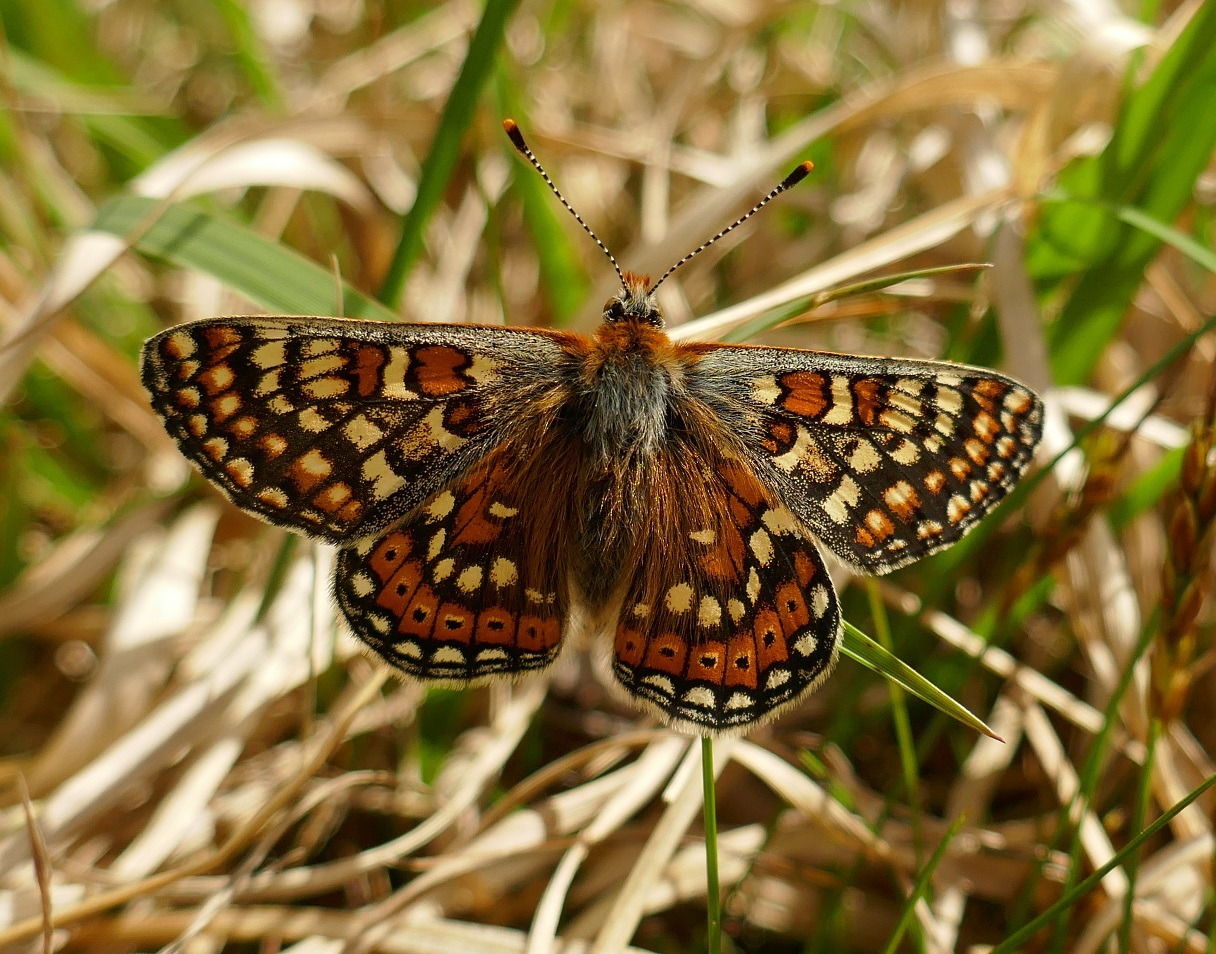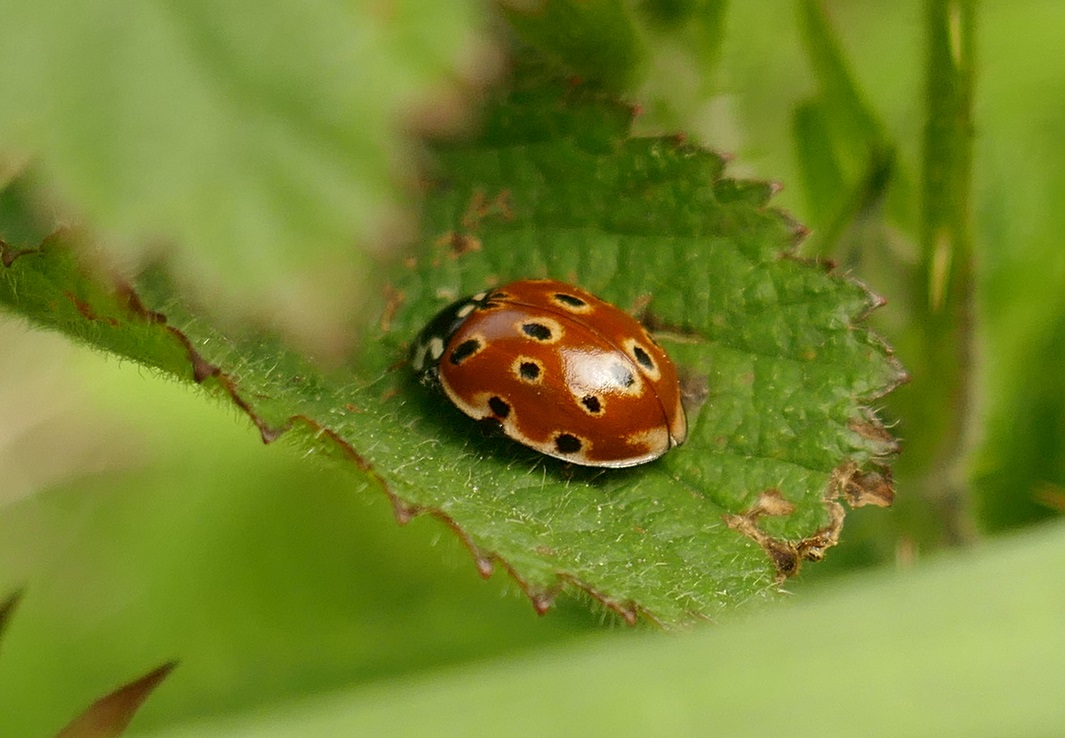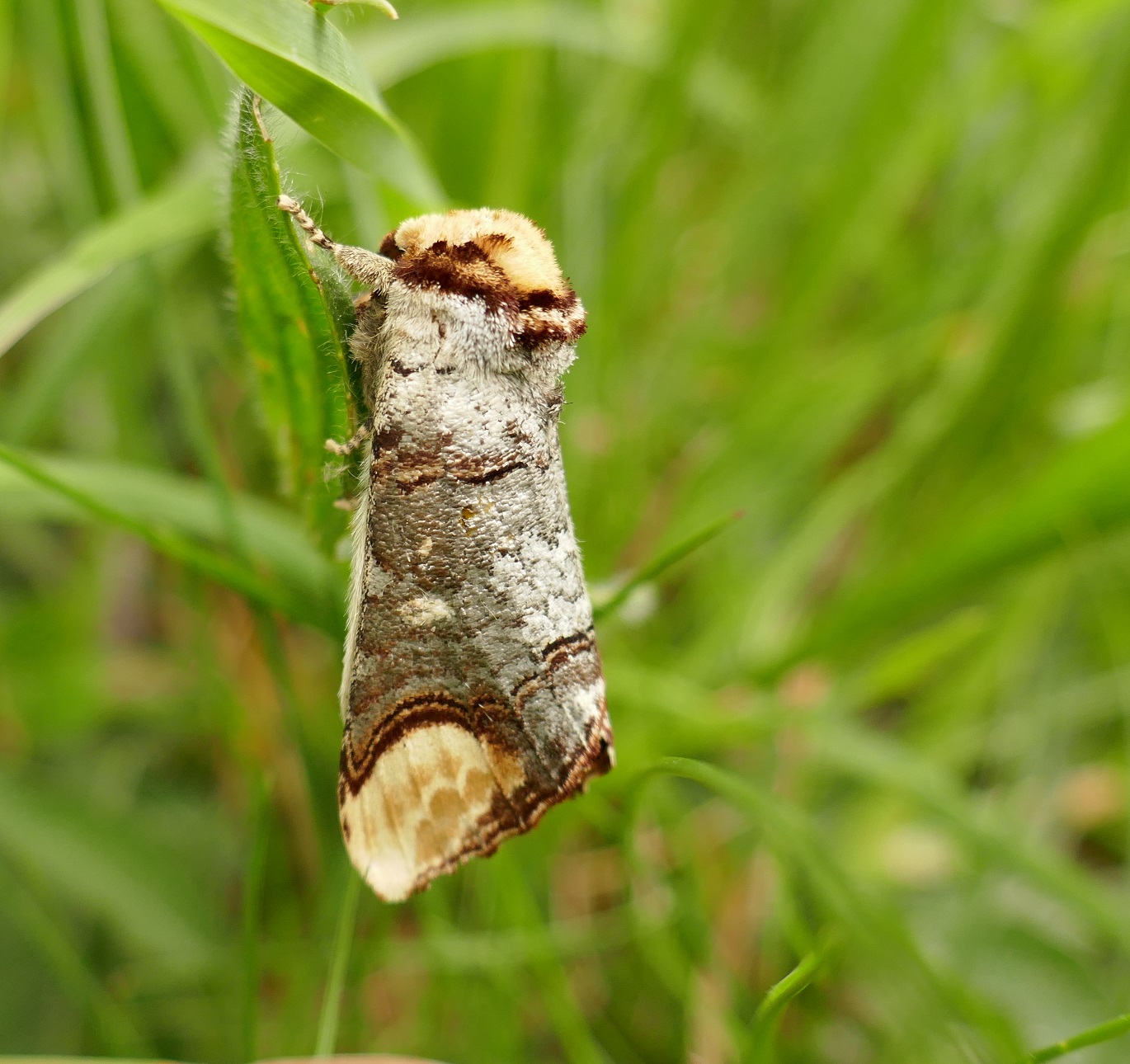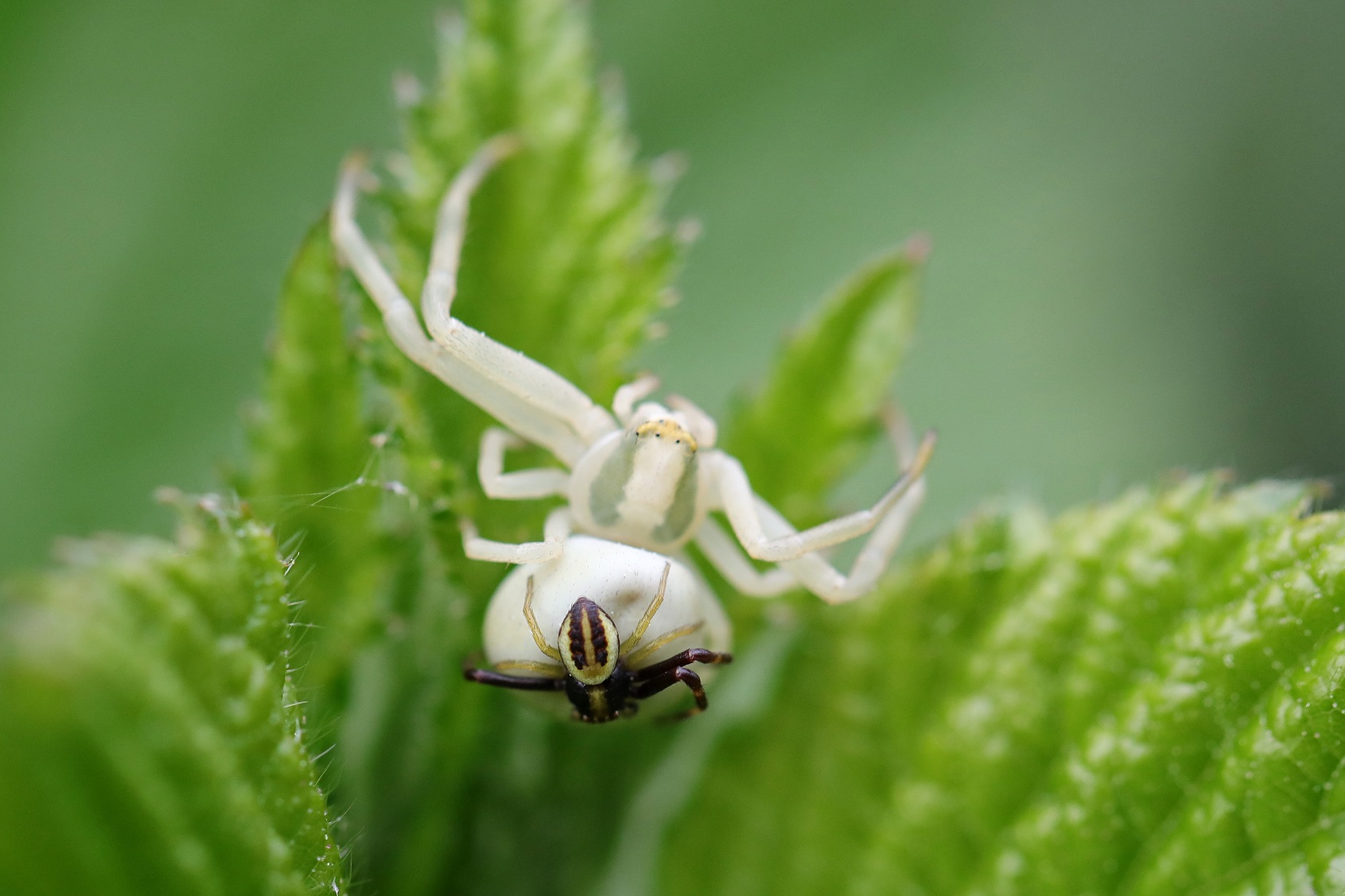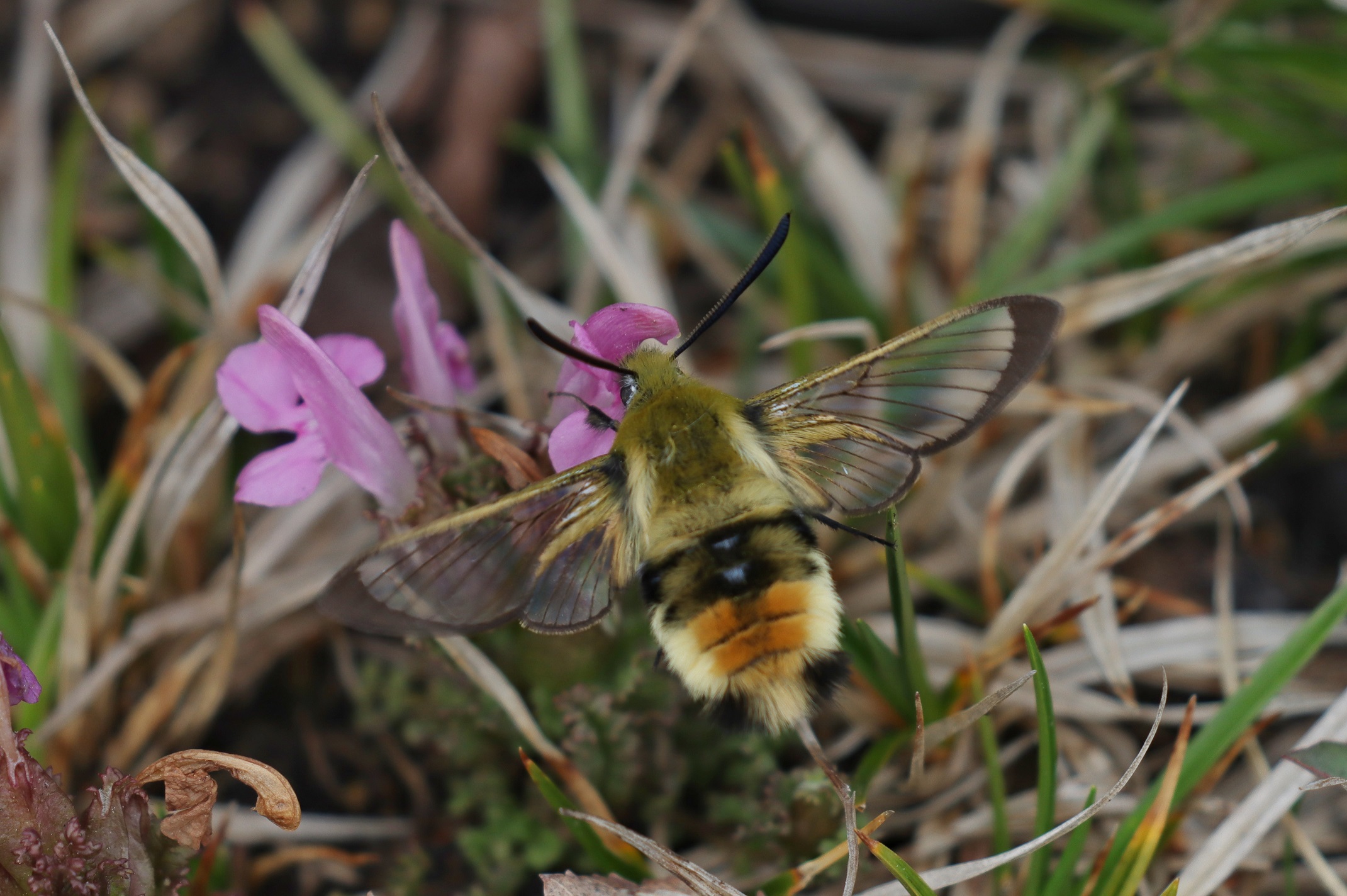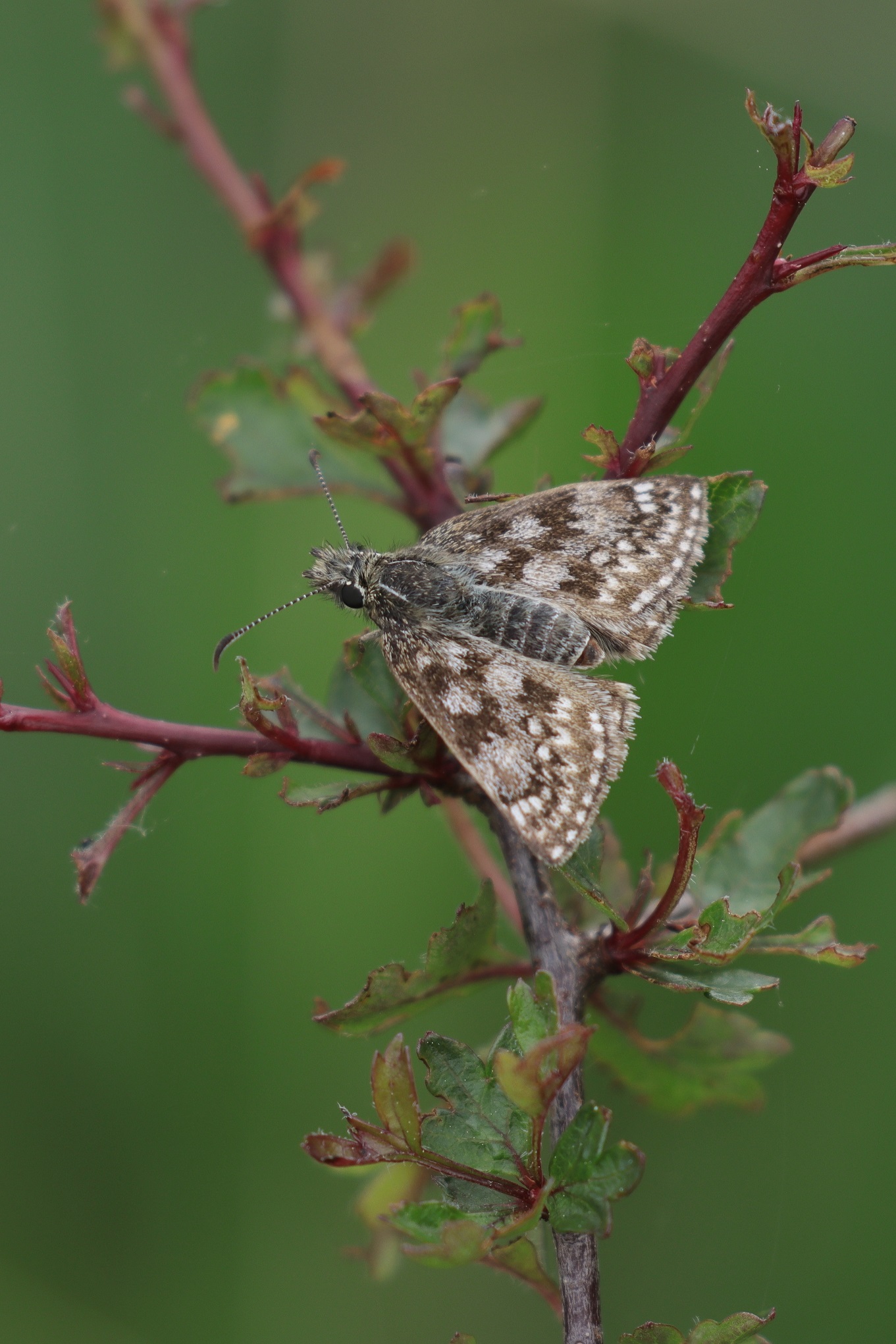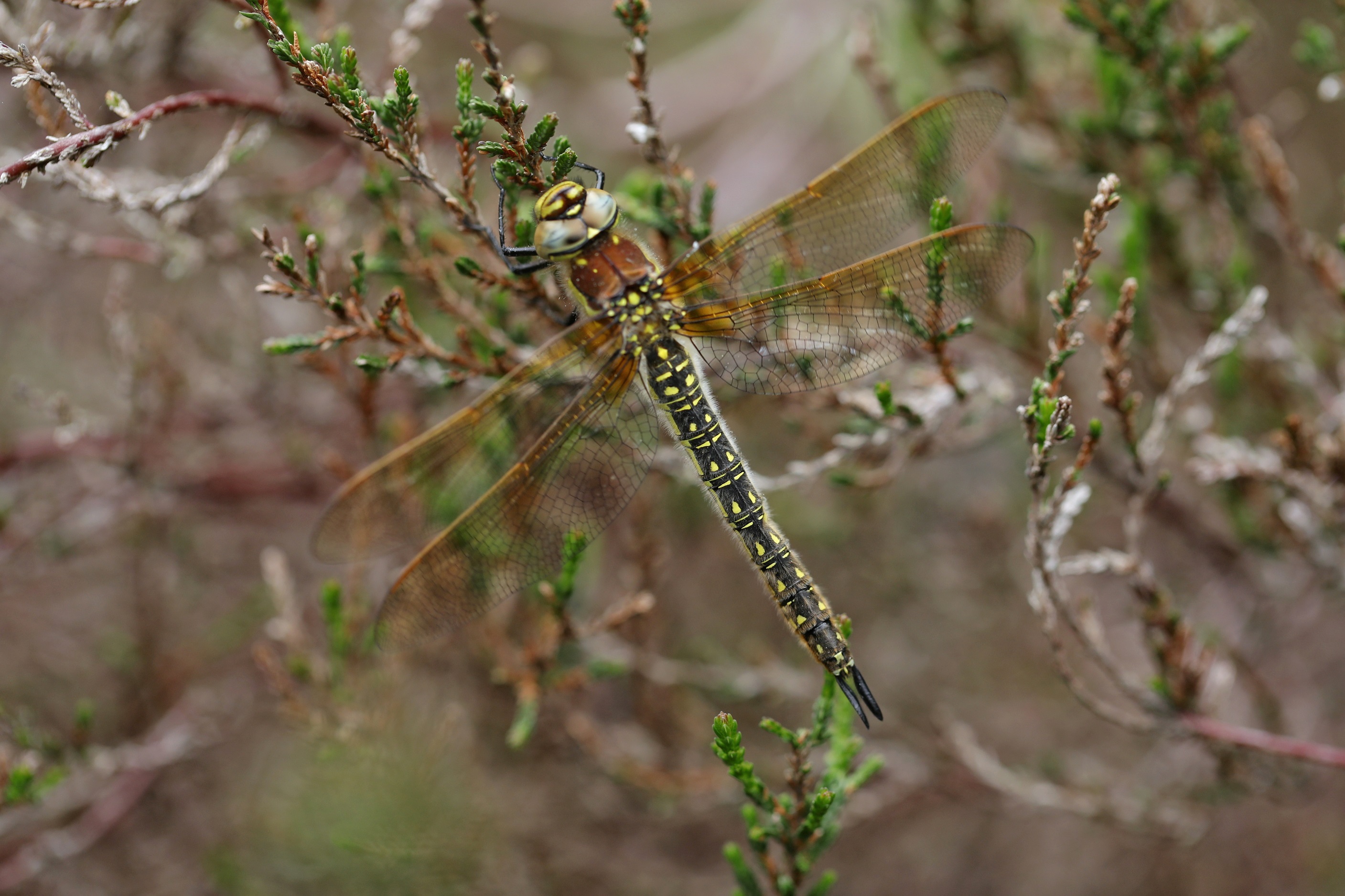The forecast of dry, sunny weather proved correct, and we had near-ideal conditions. We picked our way from the parking area at Lullymore West, turned south at the end of the track, and then west to Butterfly Conservation Ireland’s reserve at Lullybeg.
The event was really well supported and we had plenty of sharp-eyed observers to spot nature’s gems, such as an Eyed Ladybird, Azure Damselflies, Hairy Dragonflies, and a newly hatched Buff-tip moth, all on the track that borders the Irish Peatland Conservation Council reserve at Lullymore.
The track runs east-west and the vegetation bordering the wood edge that shelters the track from the north faces south, providing ideal temperatures for viewing invertebrates from April to October. The track consists of calcareous material, adding another dimension to the plant and invertebrate suite. The ecotone, the transitional zone between two or more habitats, in this case between woodland and grassland, also adds to the riches one enjoys along this track.
The wet grassland and poor fen with scattered scrub that awaits at the end of the track is the perfect habitat for butterflies and moths that find the resources they need here, and we quickly spotted Marsh Fritillaries dashing after each other, males spiraling in tightening circles as they battled for the right to their patch but in mitigation, Marsh Fritillaries are much less jealous of their domain than Small Coppers or Speckled Woods.
So abundant are they in the general area this year that we encountered them continually from the track end to the reserve for over a kilometre. The corridor linking Lullymore and Lullybeg is notable for its wet and dry heath, and its ample supply of our two native buckthorns, now holding Brimstone eggs and caterpillars. Caterpillars of various stages were spotted, occupying their classic linear posting along the leaf mid-rib, raising the upper part of their body off the surface at our merest touch. Faded and worn adults still flapped fragilely around the plants, still depositing their eggs.
The reserve has seen significant management applied during the winter so we were eager to see the results. We were pleased to see large clumps of unshaded and partly shaded Common Dog-violet, so we hope to see Dark Green Fritillaries flying on the reserve in late June. Dingy Skipper, Small Copper and Narrow-bordered Bee Hawkmoths were spotted, the latter sitting for numerous photographs. This bee mimic never fails to amaze butterfly lovers, and for good reasons. You have to see it to believe it!
The northern side yielded more individuals of the species encountered on the southern section, along with Common Blue, Burnet Companion, in plenty, and Mother Shipton moths.
By the time we retraced our steps, 11 butterfly species had been totted up, including a Green Hairstreak at the parking spot, a nice way to close our event.
A special thanks to everyone for sharing your company, kindness, knowledge, and joy and for making the day special.
Butterfly list: Dingy Skipper, Brimstone, Large White, Small White, Green-veined White, Small Copper, Green Hairstreak, Common Blue, Marsh Fritillary, Speckled Wood, Small Heath.
